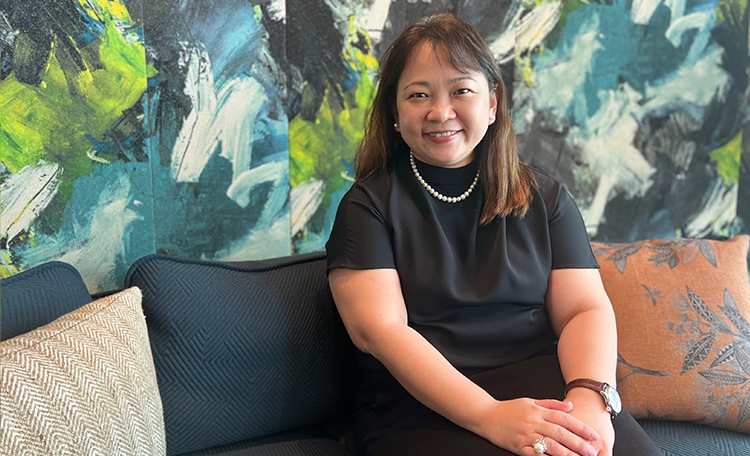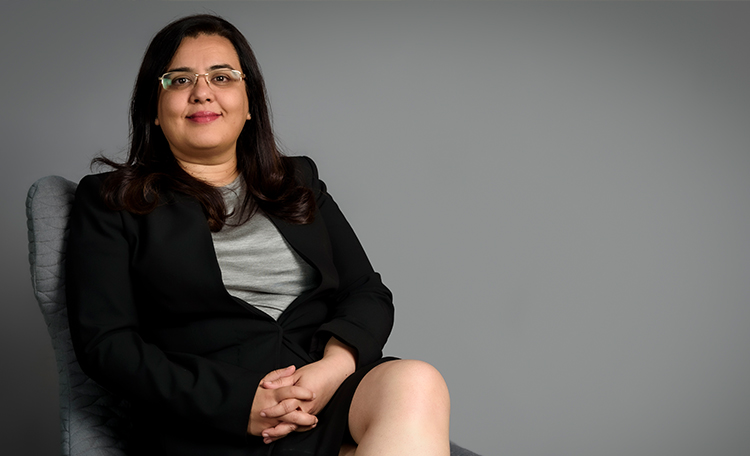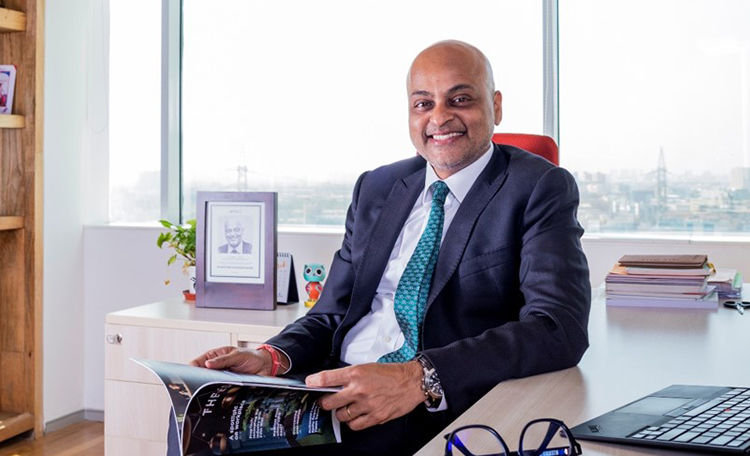Q. Andrew, how did the pandemic influence your work?
Prior to the pandemic, office-based workers woke up five days a week, went to the office and generally started work at 8.30 to 9am. Then there was this violent shift caused by the pandemic and suddenly, we weren’t doing that. We entered crisis-mode – this was not ‘working from home’ through choice. With everyone working from home, initially back-to-back, online meetings took their toll. But we adjusted very quickly. People worked out a cadence of balancing work with self-controlled wellness activity through breaks, exercise and relaxation on their own terms, not through a company provided program. Many people found that domestic activity was more easily weaved into the demands of a working day. Our work became more asynchronous and in time most people established a more permanent work environment at home, often with dual screens, a chair adjusted to their liking and their creature comforts surrounding them. For many, this led to a new mindset: ‘This suits me quite nicely, so why return to the office?’.
This fundamentally changed the reasons why people work from the office and, by extension, how offices should be designed.
Q. One of the biggest challenges corporates are facing right now is attracting employees back to the office. How can workplace design help to achieve this?
Pre-pandemic, there was already a focus on employee experience in the physical space – we saw that through food and beverage offerings, the provision of recreation facilities, and concierge services. Now however, employees have the luxury of working from home where their kitchen is stocked with the foods they want, they have a membership to the gym of their choice, and where they can address their laundry or life administration as time permits throughout the workday.
To compete, corporate offices need to become destination offices. I describe this as ‘hotelification’. This does not mean designing your office to be like a hotel but designing it so that your employees choose to go there – as if choosing to leave home for a staycation.
The mentality of office workers in many markets changed through the pandemic. If we want to attract these people back to the office, we cannot offer them the same thing they had pre-pandemic. Instead, we need to address the changes that office workers have experienced and the choices that people now have.
The actual elements that will entice employees to the office will usually reflect an organisation’s values and so will likely vary. Regardless of what they are, if we do not build offices that give people a reason to attend, then I believe they will simply choose not to attend.

Cushman & Wakefield’s Senior Director, Project & Development Services, Asia Pacific, Andrew Carmichael
Q. How do companies justify the investment in ‘hotelification’ in this cost-conscious environment?
I like to consider the cost of doing something versus the cost of not doing it. The two largest costs in most businesses are people and real estate. The cost of having real estate sit, under-utilized as employees work from home, is significant.
Companies that have not addressed the hybrid working styles of employees post-pandemic will not see improvement in their return to office rates; mandating the return to office has been unsuccessful for many companies across the globe. Why would employees go through the time and cost of commuting to an office to sit on video calls in an open-plan space? It has been proven that digital tools and technology platforms can enable productive collaboration. What they cannot enable is rich human connection.
Until we transform our offices into spaces where colleagues want to meet and connect, I think the cost of not giving employees a reason to return to the office will prove more expensive than the cost of creating a destination office.
“People don’t necessarily need to come into the office to collaborate or to be productive anymore. They do choose to come in for the rich connections.”
Q. Can office design help employees to thrive?
For me, the answer to this question is wrapped into the human need to feel a sense of contribution, to make social connections and to learn from others.
If we do our job as office designers and builders successfully, employees should feel there is value in making the effort to work from the office. On their commute home, we want them to reflect: ‘Was that worth it? Did I collaborate and make connections in a way that I could not make via a laptop? Was it beneficial, did I enjoy it?’. If the answer to these questions is ‘yes’, then I believe we are helping employees to thrive.
That’s what we’re aiming for every day now, and this is what must underpin all design and fit-out decisions.
Q. Some studies show that productivity levels are just as high for employees working from home as they are from the office. Why do you think it is important to attract employees back to the office?
Employees don’t need to come back every day. We know that searching for flexibility and better work/life balance are among the top reasons people choose to leave their jobs. But connection – which is not necessarily the same as collaboration – with work colleagues is important.
We have observed that the least-used spaces in offices are often the ‘collaboration spaces’. This is because most collaboration happens spontaneously, such as when someone turns in their chair to ask a question of their neighbour. And that kind of spontaneous collaboration is much easier in the office than navigating someone’s calendar and scheduling a call while working from home.
We must also consider the next generation of knowledge workers. Companies are welcoming in a new cohort of recent graduates, and it’s beneficial for their professional development to have time in the office with mentors. This may be a major goal of some teams, and so perhaps in these cases in-office days are devoted to creating an environment where professional relationships can thrive for the benefit of new and tenured employees.
Despite these reasons, or perhaps because of them, you must still give your people a reason, a sense of purpose, to go back to the office. Otherwise, they’ll just say, “I can do this from home, thanks very much.”
Andrew Carmichael is Senior Director, Project & Development Services, Asia Pacific at Cushman & Wakefield. The PDS service-line provides Project Management services including Building Consultancy, Specialist Project Advisory Services and end-to-end Design & Build.






